Take a deep breath. Yes, building a customer-centric strategy for your business may seem daunting.
But here’s the good news: It does not have to be this way.
It does not mean that you need to change everything at once. But, if you follow the right strategies and take the right steps initially, it will help you develop a customer-oriented business.
When your organization is completely customer-centric, then you are set for success and growth.
Hold on a second, isn’t “customer-centricity” just a fancy term everyone has adopted recently?
Not at all.
The idea is simple: concentrate on your customers, and success will be yours. This strategy is not just applicable to the retail or service sector. A customer-centric business strategy can transform your company from manufacturing to the service industry, including SaaS and healthcare.
Now, let us start by defining’ customer-centric and why it is the defining factor for long-term success.
Why Is Customer-Centricity Important in an Organization?
Customer-centricity, or making the customer the center of your business strategy, is crucial to advocating for long-term stable growth and profitability. Here’s why:
Understanding and Adapting to Customer Needs
Understanding your customer’s needs is the foundation of a successful customer-centric strategy. Expectations are higher than ever.
Do you know that over half of customers now expect constant improvements from brands? And here’s the kicker: 81% of customers prefer businesses that offer personalized solutions.
A recent Forbes study of over 1,000 U.S. consumers revealed this expectation shift. If you’re not evolving, your competitors will.
This growing demand for personalization also reshapes how businesses operate, especially in the B2B space. As John Buten mentioned on the What It Means podcast, generative AI (genAI) is shaking things up in B2B buying. Nine out of ten buyers use it to streamline their process – from research to decisions – exploring more vendors than ever before. But here’s the challenge: buyers rely on genAI more than vendor websites.
To stay ahead, businesses must create engaging, conversational, and accessible content at every touchpoint. Understanding your customers isn’t just important—it’s everything.
Increases Customer Retention
Keeping customers is cheaper than finding new ones. Did you know that a 5% boost in customer retention can increase profits by up to 95%? It’s true! Happy customers stick around, especially when they feel heard. Plus, resolving their issues quickly makes them 2.4 times more likely to return. Building loyalty isn’t just a nice idea; it’s a proven way to grow your business.
Strengthens Brand Value
When consumers are loyal, what drives that loyalty in them towards a certain brand? Great experiences. According to research, customers’ decisions in the future are affected by their experiences, with 74% agreement.
A positive experience will increase customer loyalty because the customer is likely to trust your business and refer others. It would be awesome to be the brand that customers are padding their mouths with all the time. A dedicated focus on the customer helps build your brand and develop loyal customers.
Reduces Costs and Increases Revenue
Here’s a secret: the policy of putting customers first does indeed lead to minimization of costs. CEOs who focus on customer satisfaction have their revenues grow 5.7 times faster than those who do not. Surprised? It leads to increased business revenue success.
According to research, 64% of companies where the CEO focused more on customers recorded higher revenues than their counterparts. This means that if you can make it difficult for customers to switch to other brands, then you cut down on customer acquisition costs. That extra revenue? That is good for your customers because they have to keep coming back. Isn’t that the growth that every business wants to achieve?
Tips to Build a Customer-Centric Strategy for Your Business
So, how can you build a strategy that truly puts customers first? Here are six proven tips to help your business create a customer-centric approach and turn satisfied customers into loyal advocates.
Create a Personalized Customer Experience
Customers expect interactions tailored to their unique needs and preferences. Personalization helps build trust and makes customers feel valued, which is key to a customer-centric strategy.
Start by better understanding your customers. Collect data on their behavior, preferences, and feedback. Use this information to deliver customized recommendations, offers, and experiences that resonate with them.
Document360’s Conditional Content blocks help create a tailored user experience. They allow you to show or hide specific content based on conditions like IP address, country, device type, reader groups, workspace, or dates.
This feature ensures users only see relevant content. It simplifies content management for diverse audiences and boosts engagement by delivering personalized information.
For example, you can display region-specific pricing for customers in different countries. You can also provide unique support details based on whether the user is on a desktop or mobile device.
Centralize Access to FAQs and Support Resources
Chances are that your users will have questions at some point. When it comes to troubleshooting, learning about a feature, or getting started, it’s critical to centralize FAQ material and support information so they can easily find answers and keep their attention on your product’s benefits.
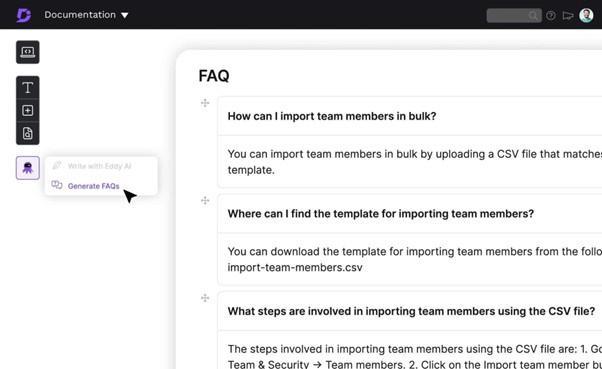
The first step is to find out what questions users have based on tickets received and feedback given.
Ask: What challenges are experienced when developers engage in onboarding? Which features or setups require some direction and focus, and in what manner?
For instance, users of project management software or tools may often wonder how to create projects, invite people to onboard, or connect to other applications.
After that, all these resources can be consolidated into one place where users can go for help – an in-app help center or a knowledge base. Document360 can help in this by making content structured and easily searchable. When choosing categories and tags, make the navigation smooth, and when using guidelines, it is essential to accompany them with visuals.
Last but not least, make resources accessible across your product. Place help links within tooltips, use the “Need Help?” button, or incorporate the FAQs into the chat widget. For instance, when the users receive an error when uploading something, link them straight to the instructions on how to do it correctly.
Do not hide resources, create text-heavy guides, or prevent the user from escalating the issue. Centralizing support minimizes customer experience hitches, improves satisfaction, and retains users throughout their lifecycle.
Use AI Chatbots for 24/7 Support
Adopting AI chatbots for customer-centric approaches is essential because they are always ready to address contemporary needs for immediate help. The chatbot industry is expanding exponentially, from $190.8 million in 2016 to $1.25 billion in 2025.
Emily Potosky, the director of research at Gartner, stated that self-automation has become broader due to better resources offered to customer service reps. Also, a Tidio research revealed that 62% of consumers would rather have a chatbot than wait for an agent.
Document360’s Eddy AI is one of the most suitable chatbots for businesses. Supported by (NLP), it provides correct answers, solves crucial problems, and provides assistance in fixing them. Eddy AI offers solutions through a knowledge base of frequently asked questions and makes interactive tutorials to solve problems with direct aid from human agents to handle more complex cases.
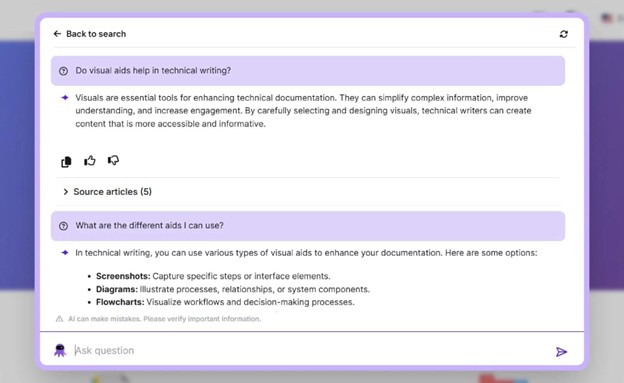
Eddy AI diagnoses problems, recommends solutions, and guides users step-by-step. It reduces response times, improves satisfaction, and builds trust. However, to ensure a balanced customer experience, it always offers live support.
Gain Insights Through Customer Feedback
Customer feedback tells the organization what the customers want, how they feel, and what they require. Customers leave feedback, and with it, businesses can gain ideas about what hurts, what is wanted and where there is room for development.
Some of the big players, such as Amazon, have adopted surveys, reviews, and feedback to meet customer needs. It also assists the firm to remain competitive by enabling it to adapt to change as soon as possible.
There are three main ways to collect customer feedback: post-purchase surveys, polls on social media, and customer support forms. These methods assist with detecting trends and, hence, making decisions about what changes need to be made based on what customers convey to the organization.
Listening to feedback makes sure that customers are well aware that their views are valued. For instance, when a company enhances its product feature in a way consumers recommend, it leads to timely trust and loyalty.
Timing is important. Get feedback after purchase or support experience when the experience is still fresh. From them, gain insights to create better decisions, attain higher satisfaction, and enhance the relations with the customer.
Promote Product Knowledge in Customer Support
Product knowledge is essential for delivering excellent customer support. Without it, your team cannot provide the fast and efficient support customers would expect.
For instance, Document360 enables you to create a knowledge base through which the support agents can learn about product details. This minimizes response time while providing the most accurate solutions to the problems.
With analytics, you can determine questions or problems that are usually frequent. This assists in updating training and other knowledge deficit situations. Integration between the support, product, and sales team ensures there is an adequate understanding of changes, new features, or policies concerning the customers.
How to Improve Product Knowledge in Customer Support
- Study product specifications: An agent has to comprehend the details about the product to be able to guide users if there is a problem.
- Use the product: Agents must get practical experience of how the products serve customers, the advantages, and the possible drawbacks involved.
- Stay informed: Similarly, ensure the agents are informed of any new technology, new developments in the industry, or new devices offered by competitors.
- Provide ongoing training: To keep the agents informed about the products, it is possible to have quizzes, role-play, and sample questions
- Invest in a KMS: A Knowledge Management System (KMS provides single-point access to the training materials, records employee’s performance and progress in their training programs, and implements a culture of continuous learning.
Businesses can improve on product knowledge, which leads to customer satisfaction, faster response to customers’ questions, and trust in the business’s support staff. Practical, knowledgeable support teams increase customer confidence, decrease tensions, and enhance your customer-centric processes.
Invest in and Improve the Customer Support Team
Imagine this: where do customers go when they have an issue? To your business! That is why how they are treated can make or break your relationship with them.
The last tip on building a customer-centric strategy is to invest in the customer support team and develop it.
Your support team is no less than the image of your business. When customers are stuck, they should be armed with the right knowledge, equipment, and solutions to make their troubles as short-lived as possible.
Update your team through training on product and service offerings. They should be able to access a central knowledge source where they can easily resolve their questions. Coordinate with other departments so every employee knows what other departments are up to.
In this case, it is understood that the customers will be effectively attended to through investment in competent support staff. An effective support team is a way of converting negatives to positives and building a long-term customer.
Schedule a demo with one of our experts to take a deeper dive into Document360
Book A Demo
Challenges of Implementing a Customer-Centric Strategy
Implementing a customer-centric strategy isn’t without obstacles. It requires a shift in mindset, tools, and processes. Organizations often face barriers such as silos, outdated systems, and rising customer demands.
Functional Silos in Customer Knowledge Sharing
Functional silos are hurdles to the realization of a customer-centric strategy. When cross-functional teams like sales, marketing, and support do not pass information across, insights get trapped.
For instance, the sales team may uncover new customer frustrations, but marketing may not, so its campaigns are off-sync. In the same way, support teams may not be privy to promises made during sales, hence delivering inconsistent service and an angry customer.
This is because silos also delay problem-solving. Lack of communication means that the teams cannot solve emerging problems promptly, and customers’ demands remain unmet.
The elimination of silos makes communication flow harmoniously and provides a consistent experience. Thus, increasing the trust and loyalty of the customer.
Lacking the Right Technology
To successfully obtain or manage customer information, businesses must embrace technology. A company that does not have CRM centrally in place comes under difficulties in managing customer interactions with different departments. This makes it difficult to attend to each customer’s unique needs or respond to their diverse requirements.
Inefficient systems particularly slow down operations, delaying customer feedback and response to inquiries. Without advanced analytics tools, companies employ mere guesstimates to do away with efficiency. Some of these methods are suitable for a small workgroup but are inadequate when the company expands.
Some of these methods are suitable for a small workgroup but inadequate when the company expands. Investing in tools such as CRMs, analytics platforms, and automation software makes day-to-day operations easier. They enhance relations and enable the development of relevant services and customer-oriented solutions for small businesses that are sustainable on a large scale.
Inefficient Support to Customer Needs
Another challenge in constructing a customer-centered strategy is the lack of efficient support. When companies cannot attend to customers and meet their needs, customers feel they need to be valued more.
For example, slow responses to the inquiries frequently may irritate a customer. Specifically, if the support teams cannot access the customer information, they would provide generic or recurrent solutions. Therefore, customers feel like they are not being listened to.
A lack of support also leads to low customer loyalty. Today’s consumers need a quick and personalized response to their inquiries. They flock to the next suitable service provider when their needs are unmet.
This is usually due to employing outdated tools, poorly described practices, or inadequate staff training. At any rate, more often than not, the support teams get overwhelmed, especially when they need proper tools and processes. When support is well-coordinated, the customers are appreciated and thus are willing to stick to services or products from the company in question.
Increased Customer Expectations and Competition
Increased customer expectations and increasing competition levels are the primary risks of a customer-focused business. With customers demanding value in speed, customization, and smooth interaction, companies that do not provide such a service risk losing their customers.
For instance, customers now benchmark every experience, whether in the B2C or B2B, against premium brands such as Amazon or Apple. If they find your service slower or less convenient, they feel disappointed. In addition, there is always a firm devising ways to develop its products and services to appeal to consumers, making things even more challenging.
This creates pressure to meet and exceed expectations. Businesses must adapt quickly, offering innovative solutions and staying ahead of trends. Without doing so, they risk losing loyal customers to faster, better, or more engaging competitors.
To overcome this, businesses need to stay flexible and customer focused. Regularly gathering feedback, monitoring industry trends, and investing in new tools or strategies can help. By constantly improving, businesses can meet rising expectations and stand out in a competitive market.
Customer-centric strategy: Tools to Adopt
The correct approach to handling a customer-centric strategy requires proper tools to reduce the challenges. These tools automate, facilitate, and enhance organizational communication and enable organizations to provide outstanding customer service without much effort.
AI-Powered Knowledge Base
An AI knowledge base is instrumental for any customer-oriented approach. They centralize the data in a single location, which can be used by customers and working teams. Applying smart algorithms, it can process the request and give context-based responses immediately without long wait times for customers and relieving teams of boring, monotonous work.
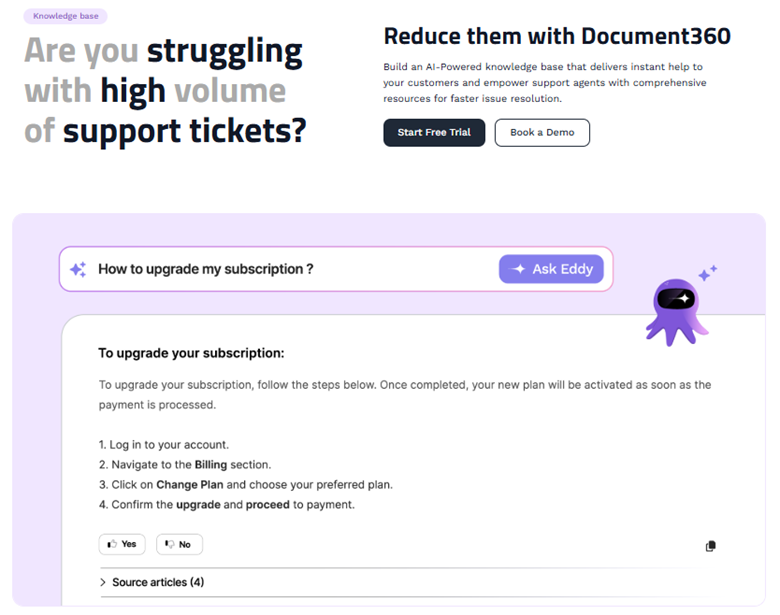
For example, Document360’s Eddy AI allows customers to find the right answers in a short time. It also fosters cross-selling support and marketing where the sales, support, and marketing departments have managed information in one place. Taking advantage of knowledge-based systems increases the response rate, accuracy, and customer satisfaction, which is important to companies that consider themselves customer-oriented.
AI Chatbots in Customer Support Workflow
AI chatbots are changing the dynamic of customer support processes. Self-service tools. These are intelligent tools that can address common queries, give immediate assistance, and are always on to help customers. They assist in handling usual questions, such as tracing the order status or handling account problems, thereby decreasing the burden on live representatives. This leaves agents to deal with more complicated issues.
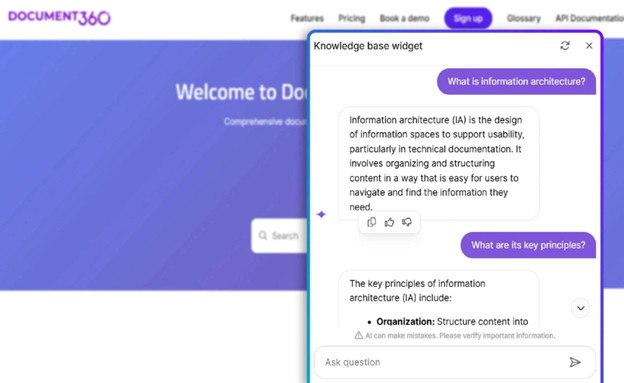
Chatbots may also use CRM data to provide customized responses depending on the customer’s history. When this happens, they can transfer the concerns to human agents. Also, chatbots gather interaction data through conversations with clients, and businesses can use that data to enhance services and anticipate customers’ needs. AI Chatbots will help companies to improve the efficiency of the communication process, decrease the time response time, and provide a customer-friendly experience.
Eddy AI Chatbot in Document360 will enable users to obtain a response to specific issues without browsing through articles in the Knowledge base. The Eddy AI Chatbot makes it easier and quicker to search for some information.
User Feedback Platform
A user feedback platform gathers customer feedback through surveys, ratings and forms to analyze the customer’s opinions. It is used to map issues, detect patterns, and find potential opportunities for change.
These platforms transform simple feedback into recommendations for improving products or augmenting services. For instance, feedback might provide insights as to why customers leave carts, or as to the features that are most wanted.
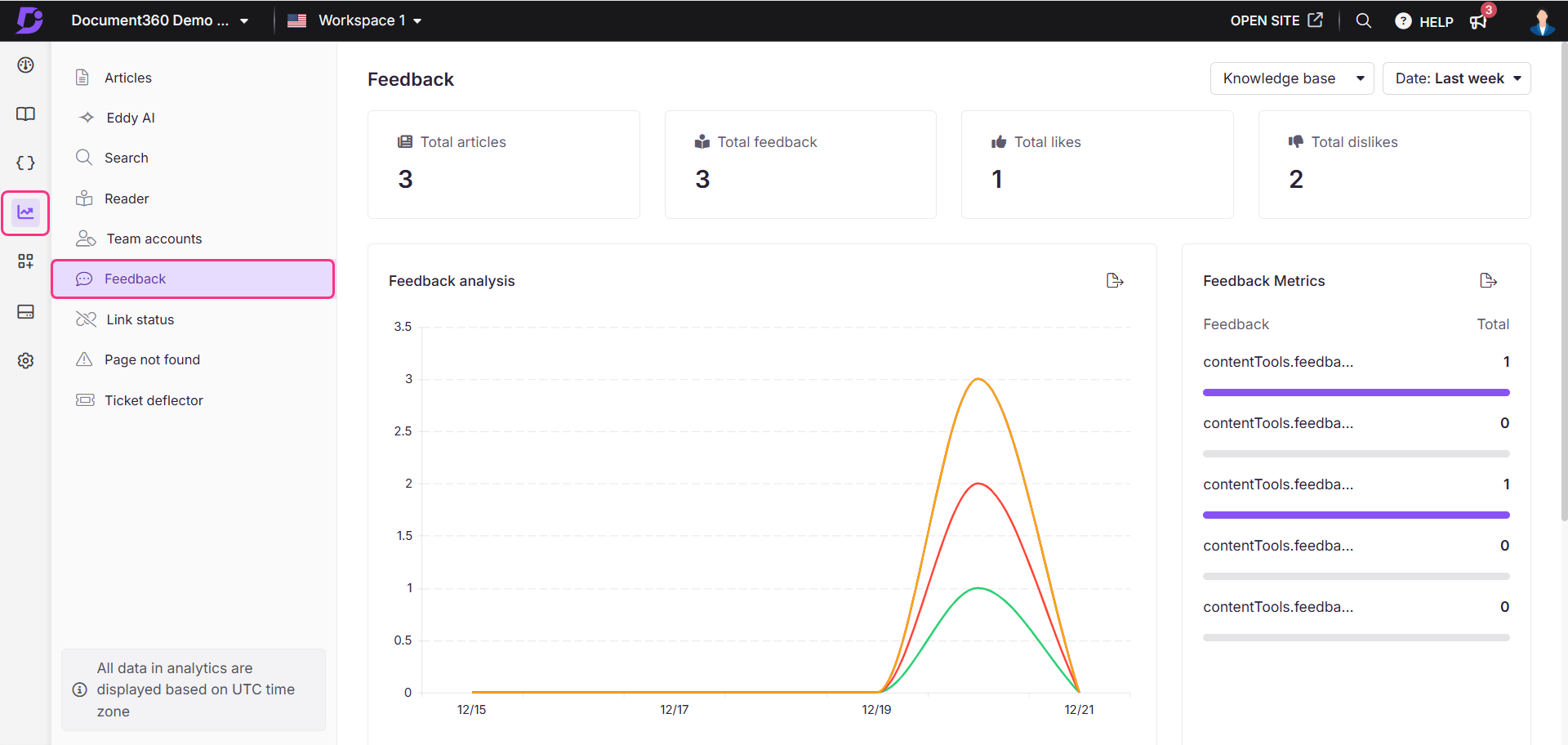
They also foster trust. Customers become loyal When they find that they trigger changes in their needs. Accepting feedback, responding to it, or implementing the suggested feedback makes the connection closer.
Implementing a feedback platform guarantees businesses are in touch with the customer’s needs, always evolving for the better and providing the best to the customer.
Customer Research Tool
A customer research tool is handy if you want to know your audience well and understand the best strategies for them. These tools assist corporations to acquire extensive information on customer activity, needs, and concerns so that management decisions can be informed by evidence. It also helps organizations in gaining insights into their target market. They talk to people in surveys, interviews, and analyses to discern patterns and preferences.
Segmentation tools such as HubSpot help businesses categorize customers according to their behavior or age. Thus allowing accurate marketing campaigns. In product development, these tools ensure that companies deliver products that meet customers’ expectations. This helps minimize the chances of releasing features that are not wanted in the market.
Customer research tools provide businesses with valuable information and a clearer way to approach strategies to make informed decisions, refine strategies, and compete favorably in cutthroat markets.
Conclusion
Customer-centricity means bringing customers to the heart of service delivery for customer loyalty. It’s imperative through the process of customization: the more personal the experience and the services offered, the closer and more trusting the relationship will be. Organizations most likely to benefit include the retail, hospitality, and healthcare sectors, technology, and e-commerce sectors. Why? Because customer centricity is closely aligned to their business success. Small businesses may apply the feedback mechanism and low-cost technologies and focus on the knowledge of customers and their approach to achieve competitive advantages.





 –
– 

